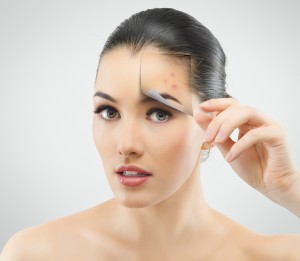Is donkey milk the first form of lactic acid peel??
Coveted throughout the centuries, donkey milk – used by Cleopatra and later Pauline Bonaparte, Napoleons’s sister – was used to keep their skin exfoliated and dewy soft.
Greeks considered it an excellent remedy, the Romans regarded it as a luxury drink, Hippocrates recommended it for all sorts of illnesses and complaints…In short, donkey milk was highly prized!
Outrageously expensive even today, this was beyond luxury for these ladies of wealth. Latte, a Greek donkey farm, gives great information about the process of milking donkeys. Check it out now for a good chuckle!
Below is a cheat sheet of what is most commonly used today. Latic acid is still popular, although it is not made with donkey milk.
 Alpha Hydroxy Acid Peels (AHA)
Alpha Hydroxy Acid Peels (AHA)
Alpha hydroxy acids (AHAs) are often:
- fruit acids
- sugar cane juice of the fermentation of milk
- naturally occurring carboxylic acids such as glycolic acid (a natural constituent of sugar cane juice), and lactic acid (found in sour milk and tomato juice)
This is the mildest of the peel formulas and produces light peels for the treatment of fine wrinkles, areas of dryness, uneven pigmentation and acne. AHAs can also be mixed with a facial wash or cream in lesser concentrations as part of a daily skin-care regimen to improve the skin’s texture.
There are five usual fruit acids: citric acid, glycolic acid, lactic acid, malic acid and tartaric acid. Many other AHAs exist and can be used.
Possible side effects: AHA peels may cause stinging, skin redness, mild skin irritation and dryness.
Beta Hydroxy Acid Peels (BHA)
It is becoming common for beta hydroxy acids (BHA) peels to be used instead of the stronger alpha hydroxy acid (AHA) peels due to BHA’s ability to get deeper into the pore than AHA.
Studies show that BHA peels control sebum excretion, acne, as well as removing dead skin cells better than AHAs, due to AHAs only working on the surface of the skin. Salicylic acid is a beta hydroxy acid.
Jessner’s Peel
Jessner’s peel solution, formerly known as Coombe’s formula, was pioneered by Dr Max Jessner, a German-American dermatologist.
Dr Jessner combined 14% salicylic acid, lactic acid, and resorcinol in an ethanol base. It is thought to break intracellular bridges between keratinocytes. It is very difficult to “overpeel” the skin due to the mild percentages associated with the acid combination, resulting in a good peel to start with.
Retinoic Acid Peel
Retinoic acid is a retinoid. This type of facial peel is performed in the office of a cosmetic surgeon, oral and maxillofacial surgeon, or a dermatologist in a medical salon / spa setting.
This is a deeper peel than the BHA peel and is used to remove scars as well as wrinkles and pigmentation problems. It is usually performed in conjunction with a Jessner peel (which is performed immediately prior to open up the skin, so the retinoic acid can penetrate on a deeper level). The client leaves with the chemical peel solution still on their face. The peeling process takes place on the third day. More dramatic changes to the skin require multiple peels over time.
Trichloroacetic Acid Peels
Trichloroacetic acid (TCA) is used as an intermediate to deep peeling agents in concentrations ranging from 20-50%. Depth of penetration is increased as the concentration increases, with 50% TCA penetrating into the reticular dermis. However, concentrations higher than 35% are not recommended because of the high risk of scarring. TCA peels are preferred for darker-skinned patients.
Trichloroacetic acid peels are used to:
- smooth out fine surface wrinkles
- remove superficial blemishes
- correct skin pigment problems
Trichloroacetic acid peels may:
- require pre-treatment with Retin-A or AHA creams
- require repeat treatment to maintain results
- require the use of sunblock for several months
- take several days to heal depending on the peel depth
Phenol Peels
Phenol is the strongest of the chemical solutions and produces a deep skin peel.
Some publications claim that the phenol peel effect could be due to the action of croton oil and that phenol would not be effective without this oil. In reality, many phenol peel solutions exist that do not contain croton oil. The latter is only a penetration enhancer, acting at the very superficial epidermal layers. Croton oil is not the only penetration enhancer that can be used, however.
Effects of a phenol chemical peel are long lasting, and in some cases are still readily apparent up to 20 years following the procedure! Improvements in the patient’s skin can be quite dramatic. A single treatment usually achieves the desired result.
Phenol peels are used to:
- correct blotches caused by sun exposure or aging
- smooth out coarse, deep wrinkles
- remove pre-cancerous growths (although the jury is still out on this one)
Phenol peels may:
- pose a risk of erythema if applied without following strict guidelines
- permanently remove facial freckles
- many formulas cause permanent skin lightening by reducing the ability to produce pigment
- require increased protection from the sun permanently
Missed the first installment in our Peel Series? Fear not, you can check it out here!
And check out our blog for the latest advances in skin care.
Pingback: Creative art leg cast - Female in leg cast - Wheelchair fashion street style - Candy dress skirt - Bunny ears hat - wheelchair humor |·